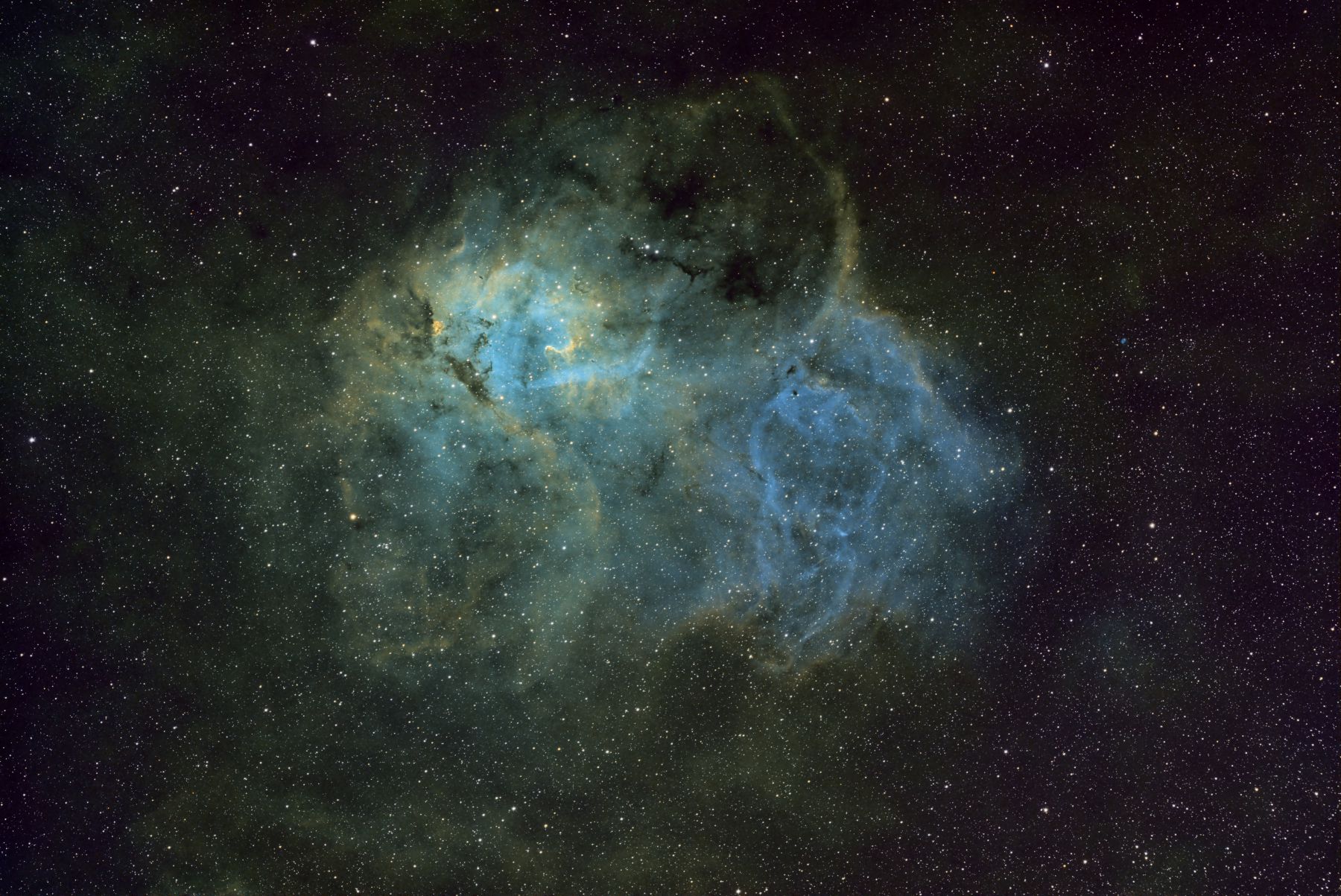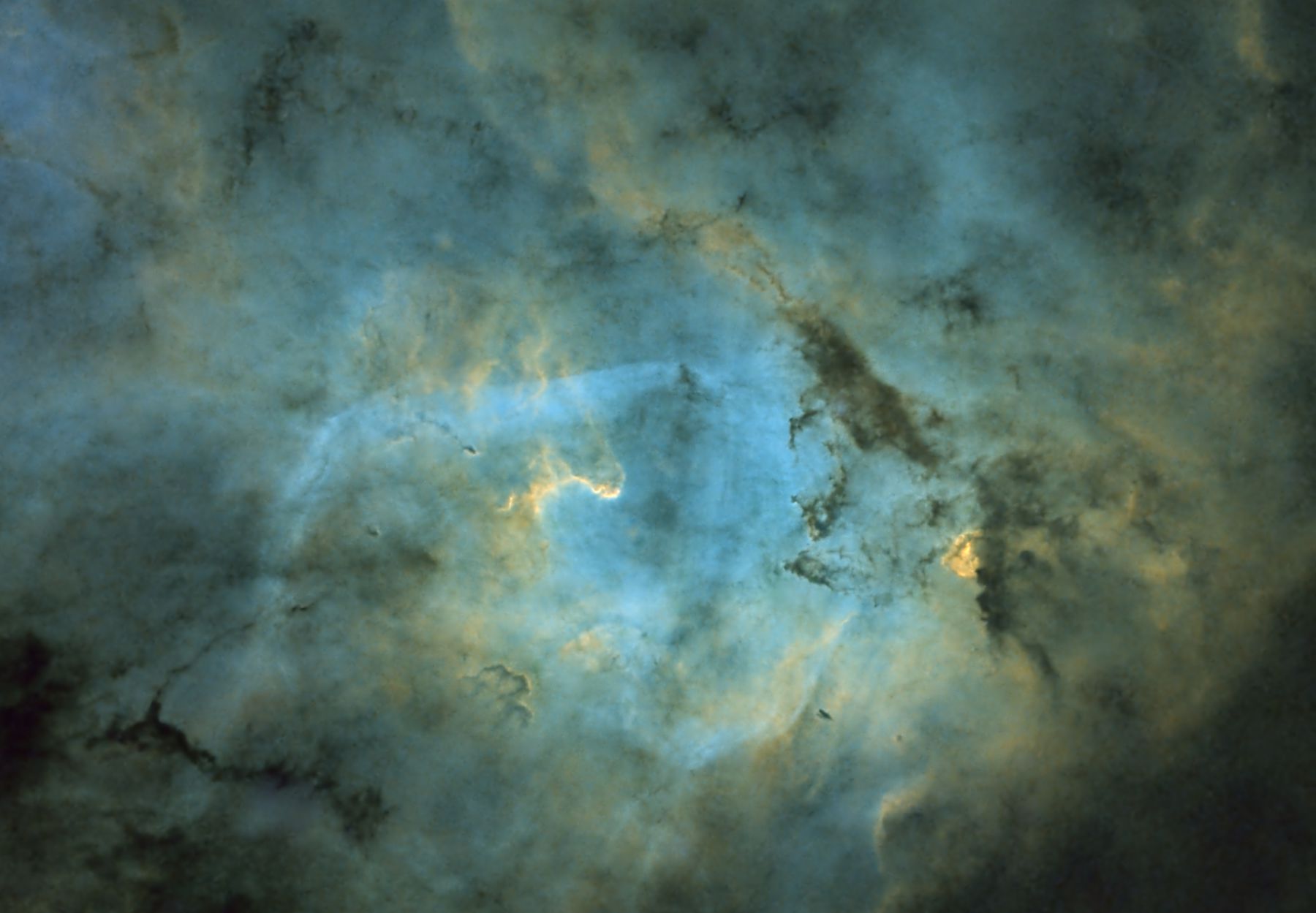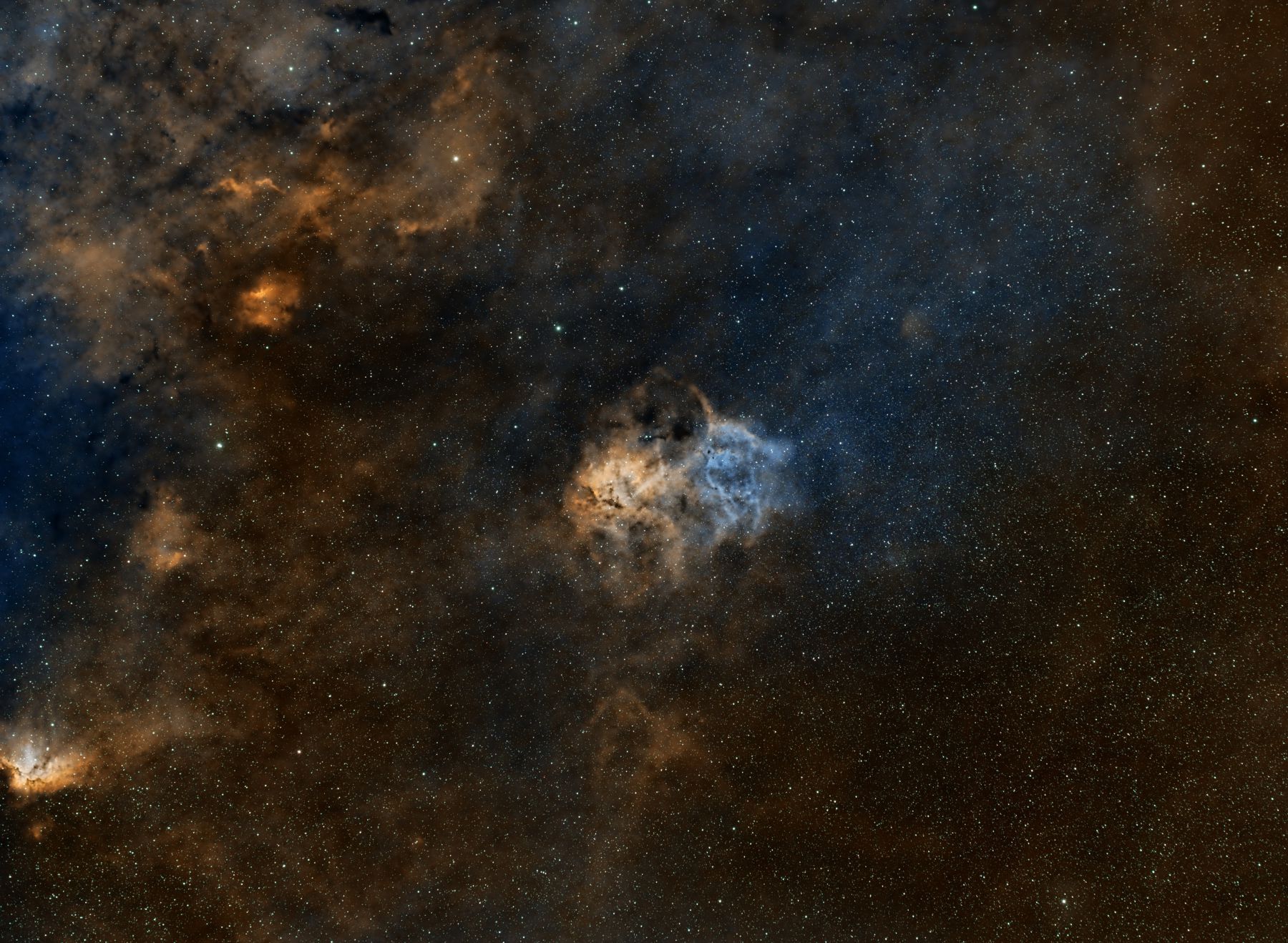Information...
This is a another narrowband image which has been taken with Sulphur II (SII 671.7 & 673.0 nm), Hydrogen alpha (Hα 656.3nm) and doubly ionised Oxygen (OIII at 500.7 & 495.9nm) filters. For the main images the resulting 3 monochrome images have then been combined with the SII being mapped to the 'Red' channel, Hα to 'Green' and OII to 'Blue'. An additional neutral colour 'Luminance' filter has also been used.
For the widefield image, a HSO palette has been chosen, with a dual-narrow band filter used for the Hα ('Red') and OIII/Hβ ('Blue') channels. The 'Green' channel has then been synthesised from a mix of the resulting Red/Blue images.
The Lion Nebula, can be found in the constellation of Cepheus and without this kind of specialist processing is more of 'red / blue-grey blob'!





